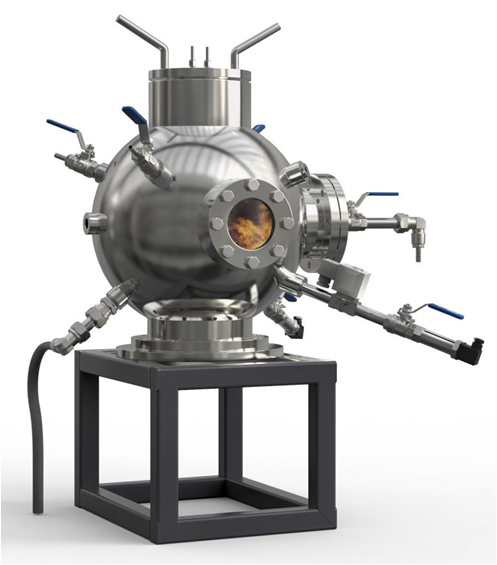Gas Explosion Characteristic Testing Device
According to
ANSI/CAN/UL 9540A: 2019
BS EN 15967

The gas explosion characteristic testing device provides a sealed testing space, fills the tested gas into the vacuum treated testing space, ignites and detonates it through external control, automatically records changes in internal pressure, temperature, etc., and obtains parameters such as the test gas explosion pressure, maximum explosion pressure, explosion pressure rise rate, and maximum explosion pressure rise rate.
The gas explosion characteristic testing device can be used to meet the measurement of Pmax value of gas released from samples in UL 9540A standard.
The gas explosion characteristic testing device does not include mixture preparation equipment and liquid flammable substance evaporator equipment; To pre configure the mixed sample gas, relevant products need to be configured separately.
Gas Explosion Characteristic Testing Device consists of
· The electrical control cabinet adopts a metal frame structure, and the surface is treated with processes such as electrostatic spraying and high-temperature baking, which are resistant to dirt, wear, oil stains, easy to clean, and beautiful.
· The box is equipped with a 19 inch touch screen and integrated electrical control circuit, making it easy to move and place.
· The control system adopts Siemens PLC and analog module to achieve vacuum pumping, blowing, temperature and ordinary pressure data reading; Real time monitoring, display, and data storage of temperature, pressure, explosion pressure, explosion slope, and testing process can be achieved. The testing process data can be reported and output in Excel, Word, PDF, and other file formats for easy viewing and editing.
· The explosion pressure is collected using a dynamic data acquisition card with a 24 bit resolution and a sampling frequency of 128 KS/s.
· The front end of the sphere is equipped with an explosion-proof glass observation window for observing and recording the internal test site during the testing process; The top of the sphere is equipped with a threaded installation structure ignition device, which can be replaced and cleaned regularly; The back end of the sphere is equipped with a thermocouple installation flange, which can be adapted to the thermocouple according to testing requirements.
· Multiple interfaces are reserved around the sphere, including vacuum ports, sample gas inlets, blowing ports, manual sampling ports, and pressure monitoring ports. Additionally, multiple 1/2 caliber interfaces are reserved to connect additional customer configured products and meet testing requirements.
· The maximum pressure resistance of the cabin is 3Mpa, with a constant pressure not less than 2MPa, and equipped with an engineering pressure of 2.5Mpa safety valve.
· The ignition electrode is located in the center of the test container, with a diameter of about 4mm and a tip angle of 60 °. The distance between the tips is about 5mm, and it is fixed as a whole on a detachable threaded flange. When carbon deposits occur at both ends of the electrode, it can be easily disassembled and cleaned.
· Adopting K-type armored thermocouple, with a range of 1000 ℃ and an accuracy of 0.1 ℃. The thermocouple is fixed and installed using a threaded sleeve interface for easy disassembly and sealing.
· Install a manual ball valve for testing and manually sampling to analyze the gas after explosion and combustion.
If you have a particular need for fire test instruments or are just in the planning stage, let's contact us.